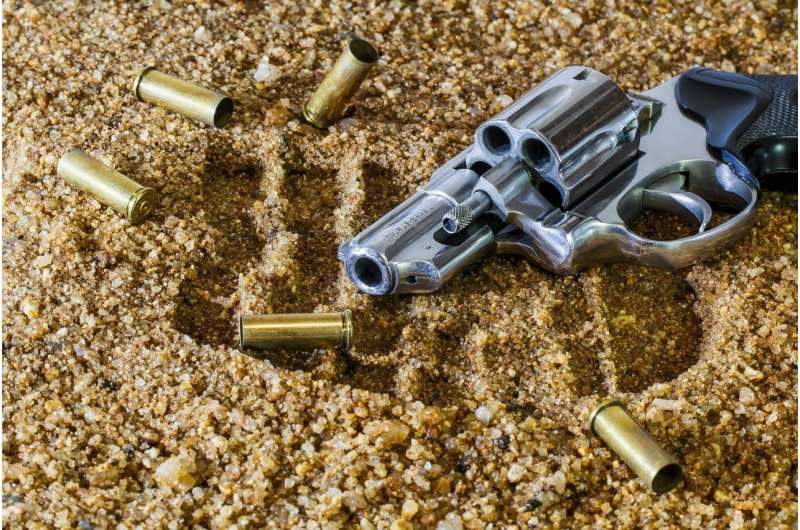Sustained police effort explains higher arrests for gun murders

The primary reason gun fatalities result in arrests more frequently than nonfatal shootings is police devote more time and resources to the fatal cases, a new study by scholars at Duke and Northeastern universities finds.
This suggests that persistence pays off, yet staying with an investigation that may last months is a luxury afforded only to homicide detectives, the researchers say.
"With respect to preventing gun violence, an arrest in a nonfatal shooting is every bit as important as an arrest in a fatal shooting," said Philip J. Cook, professor emeritus at Duke's Sanford School of Public Policy and the study's lead author. "Our results suggest that police departments should invest additional resources to investigate nonfatal gun assaults."
The study, "Why do gun murders have a higher clearance rate than gunshot assaults?," appears in the journal Criminology and Public Policy.
Researchers analyzed how resources affect the likelihood that an investigation will be successful, defined as leading to at least one arrest. They examined data from 2010 to 2014 from the Boston Police Department that included all gun homicides and a sample of criminal cases in which the victims survived a gunshot wound.
Specifically, they analyzed 204 shootings that included at least one homicide, as well as a representative sample of 231 shooting cases in which no one died. Data came from detectives' investigation files, forensic evidence databases and interviews with investigators.
The study found that fatal and nonfatal cases were nearly indistinguishable with respect to circumstances and victim characteristics. However, fatal cases were more than twice as likely to lead to an arrest (43 percent) than nonfatal cases (19 percent).
During the first two days after the crime, arrest rates for fatal and nonfatal cases were identical—11 percent. However, for cases that did not lead promptly to an arrest, an additional 32 percent of homicides subsequently led to an arrest, compared to an additional 8 percent in nonfatal cases.
The difference, researchers concluded, is tied to the higher level of resources and sustained effort typically dedicated to homicide investigations. The difference could be seen from the very beginning, at the scene of the crime: More investigators were assigned to homicide scenes, which subsequently yielded more evidence.
In addition, the study found a distinguishing characteristic of successful investigations was a cooperating witness.
"When investigators put in additional effort, they are more successful in gaining the cooperation of key witnesses," Cook said. "They also collect and analyze more evidence. This leads to more arrests, which enhances the capacity of the police to hold violent gun offenders accountable, deliver justice to victims and prevent further gun attacks."
More information: Philip J. Cook et al, Why do gun murders have a higher clearance rate than gunshot assaults?, Criminology & Public Policy (2019). DOI: 10.1111/1745-9133.12451
Provided by Duke University




















